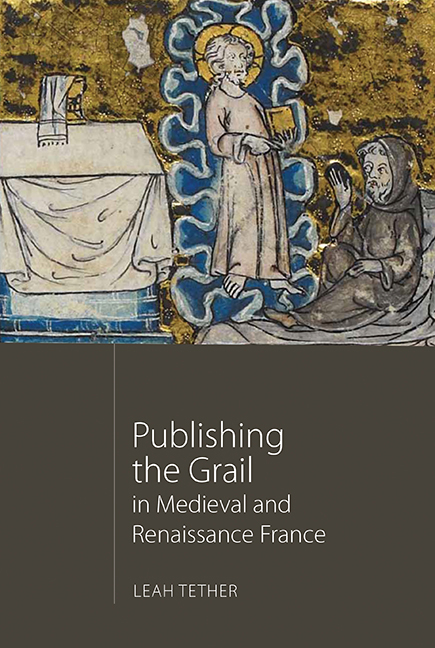Book contents
- Frontmatter
- Contents
- List of Illustrations
- Acknowledgements
- List of Abbreviations
- Miscellaneous Frontmatter
- Introduction: Grail Literature in France c. 1180–1530
- 1 Publishing in the Middle Ages and the Renaissance
- 2 Blurbing the Grail
- 3 Disclosing the Author
- 4 Re-packaging the Grail
- 5 Patronage and Promotion
- Conclusion
- Appendix: Timelines of Composition and Production
- Bibliography
- Index
- Arthurian Studies
1 - Publishing in the Middle Ages and the Renaissance
Published online by Cambridge University Press: 16 May 2018
- Frontmatter
- Contents
- List of Illustrations
- Acknowledgements
- List of Abbreviations
- Miscellaneous Frontmatter
- Introduction: Grail Literature in France c. 1180–1530
- 1 Publishing in the Middle Ages and the Renaissance
- 2 Blurbing the Grail
- 3 Disclosing the Author
- 4 Re-packaging the Grail
- 5 Patronage and Promotion
- Conclusion
- Appendix: Timelines of Composition and Production
- Bibliography
- Index
- Arthurian Studies
Summary
In the Introduction, I alluded to the debate regarding the appropriateness of applying the term ‘publishing’ to manuscript culture, since both popular and scholarly conjecture often suggest that the publishing trade only began with the arrival of print. This contention is frequently linked to the notion that printed books so quickly overtook manuscripts as the predominant format for textual dissemination that it supposedly marked a very immediate, and irreversible, change in book production, one which in effect underpinned the formation of a brand new industry. For example, in Elizabeth Eisenstein's well-known book, The Printing Press as an Agent of Change, the author emphasises the ‘instability and infidelity’ of manuscript transmission and thus how it succumbed very early following the introduction of the new technology. However, various scholars from a broad range of disciplines have put forward cases over the years, including my own brief prolegomena on the matter in relation to the Conte's Continuations, that contrastingly and persuasively support the idea that the process of change was far more complicated and protracted than this would suggest. For example, in their Introduction to The Uses of Script and Print, 1300–1700, Walsham and Crick state of recent scholarship on the matter that:
the ingrained contrast between ‘script’ and ‘print’ has begun to blur and fade, giving way to an emphasis on their lingering co-existence, interaction and symbiosis both before and after 1500. To change the metaphor, the division between the terra cognita of printing and the obscure, unmapped world of scribal culture now seems to have almost run its rhetorical course.
In spite of this change of emphasis, medievalists are evidently still wary of the term. For example, in his study of Christine de Pizan's deep involvement in the production of her own works, James Laidlaw ensures to caveat his designation of Christine as a publisher as ‘a deliberate anachronism’. This said, even if the term ‘publication’ and its derivants are still cautiously applied, scholarly work that discusses manuscript culture and secular literature of the Middle Ages (including examples regarded as seminal) has readily made use of publishingrelated terms. The most notable example of this is probably Elspeth Kennedy's field-shaping piece, ‘The Scribe as Editor’, in which Kennedy authoritatively sets out the editorial and creative agency of scribes during the copying process.
- Type
- Chapter
- Information
- Publishing the Grail in Medieval and Renaissance France , pp. 13 - 26Publisher: Boydell & BrewerPrint publication year: 2017



